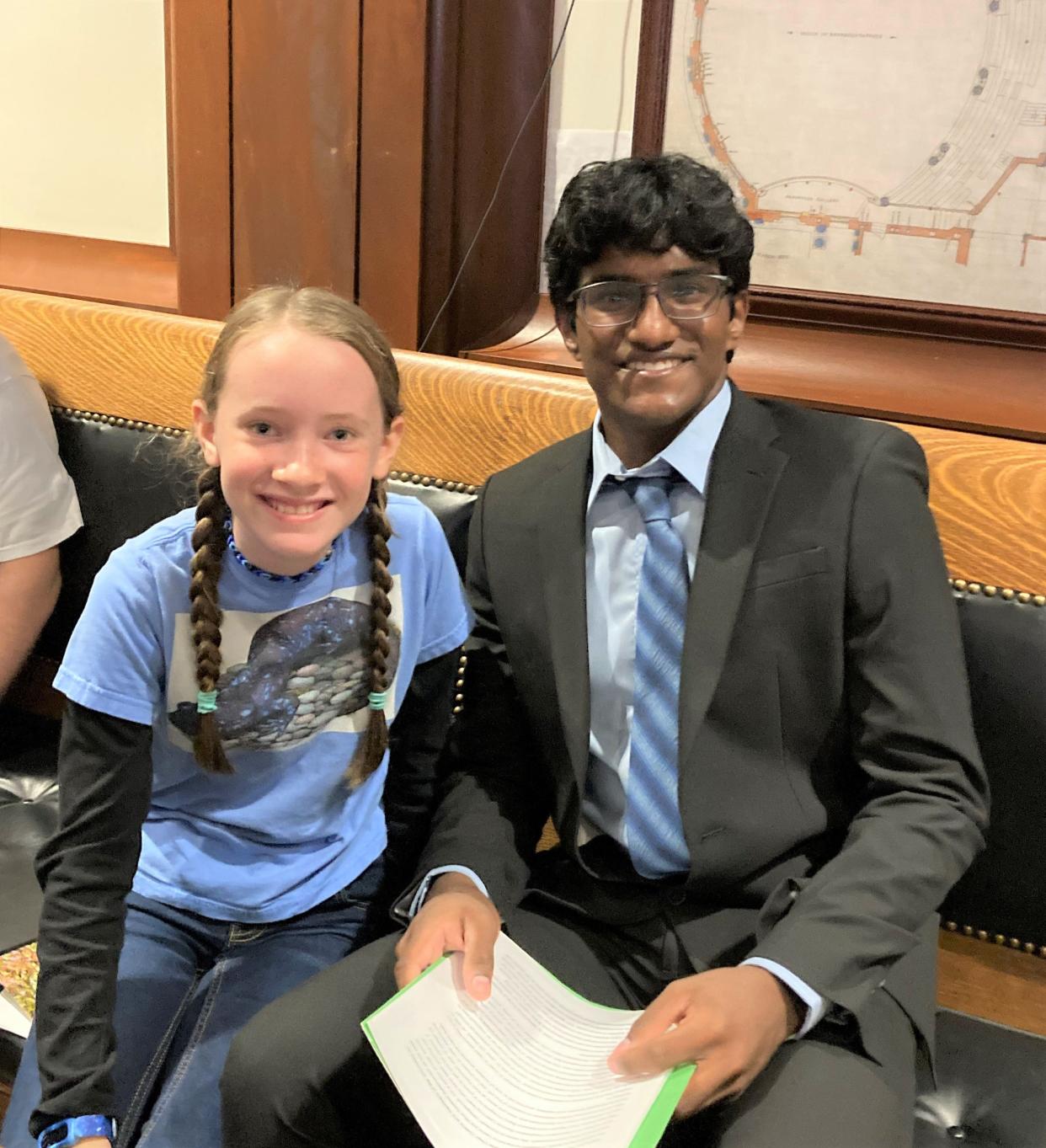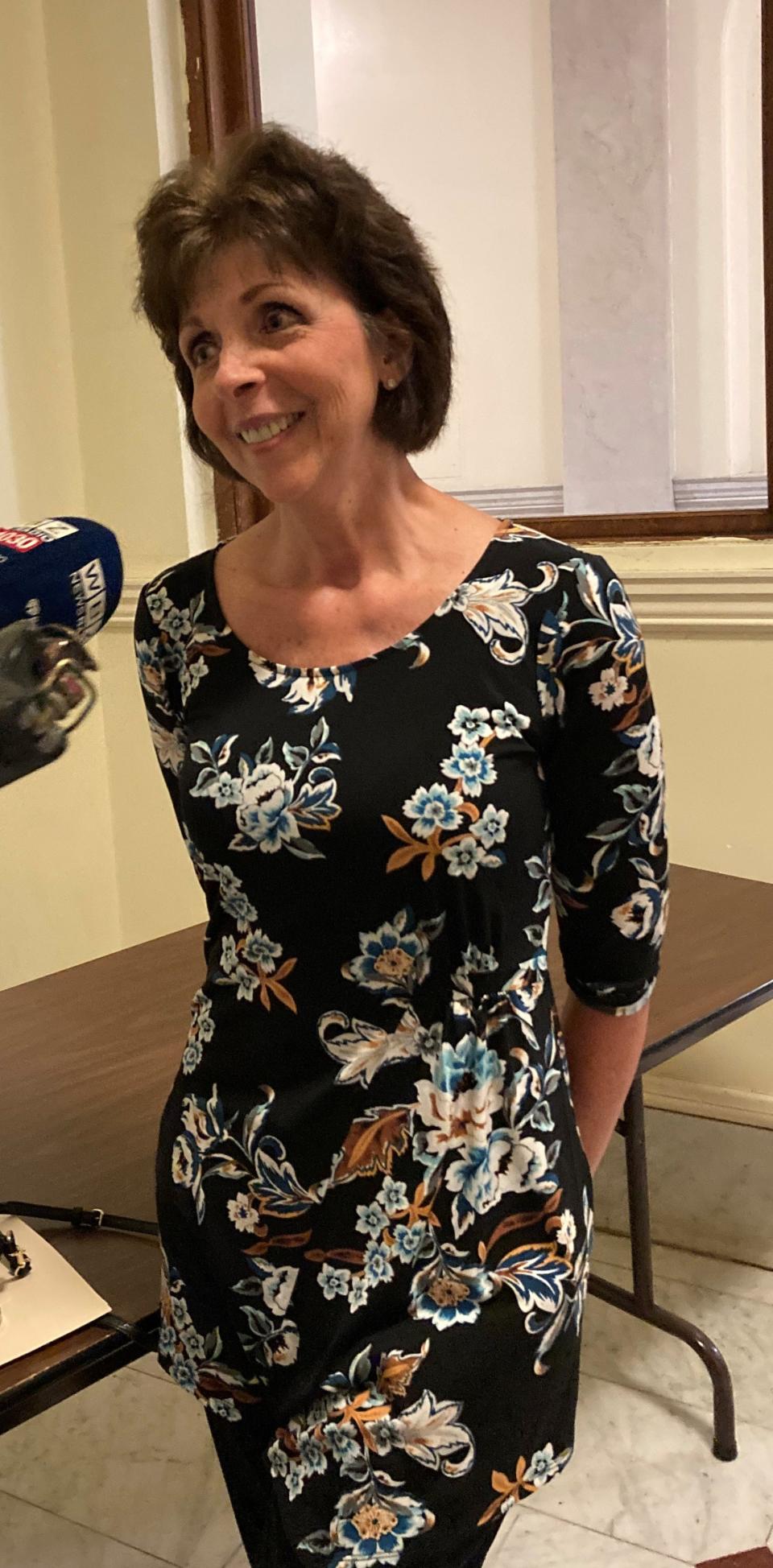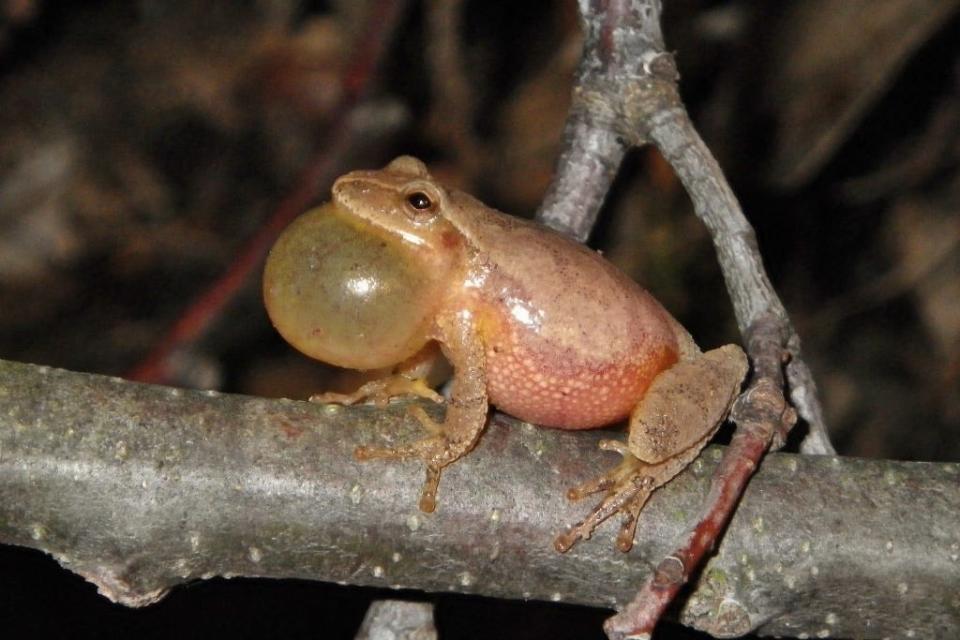Mass. has no state amphibian, but some local students want to change that

The short list of creatures vying for recognition as the newest Massachusetts state symbols may not be as cute as a tabby cat, as stately as a Morgan horse or as iconic as the Boston terrier, but they are all native to the Bay State.
Two creatures, the blue spotted salamander and the spring peeper, an inch-long tree frog, have been proposed as the state amphibian. Activists advocating for each are (or were) schoolchildren seeking to have the state Legislature recognize their creatures of choice and pass a bill memorializing their inclusion into the pantheon of state symbols.
The latest proposal comes from Semona Peet, a Southborough fifth-grader who last week testified before the Joint Committee on State Administration and Regulatory Oversight.
Semona, who has loved the creatures since she was little because they are “super adorable” and would be “beautiful representatives of all the animals living in a vernal pool,” chose the salamander for its status as a threatened species.
Joined at the table by Rep. Kate Donaghue, D-Westborough, she noted that a designation as a state symbol could increase conservation and education efforts around the amphibian.
Protect the salamander, protect the vernal pools
The creatures live in vernal pools, those indentations in land that collect spring rainwater and are home to a number of amphibian species including the spring peeper frogs. The pools occur spontaneously and do not harbor fish, making it the “perfect home for amphibian babies,” Semona said. The pools dry up over the summer months but may fill again in autumn, depending on rainfall.
“You’re falling behind,” Semona told the committee, noting that 27 other states have a designated amphibian. If the lawmakers favor the blue spotted salamander, Massachusetts would be the first to designate it as a state icon.
High school senior Sriniketh Velagapudi of Andover also testified in support of the salamander. Velagapudi said he and other students, most attending their freshman year of college now, have been working with Rep. Tram Nguyen, D-Andover, for four years on the project.
The group chose the salamander to raise awareness in Massachusetts about the endangered species and the loss of its habitat, and the disappearance of vernal pools and wetlands.
While the state lawmakers pondered the testimony of two of the state’s younger residents, Debra Jeffries, a retired teacher from Fitchburg, sat down to testify in support for a different state amphibian: the spring peeper.

Since 2011, Jeffries said she has “tried and tried and tried” to enlist the support of lawmakers in the quest.
“My students have since graduated,” Jeffries said, and she has retired after spending 26 years in the education system. However, Jeffries persists.
“The sound of spring peepers is a sign of hope for many,” Jeffries said, likening the sound of one peeper to a baby chick and the sound of many to sleigh bells. “It’s a sound of happiness. When the weather starts to warm, that is the sound many people hear that signals hope of spring to come.”

Horseshoe crabs as the state's marine invertebrate?
Meanwhile, another less-than-cuddly creature, the horseshoe crab, is being proposed as the marine invertebrate for the state by Maureen Ward of Barnstable, a member of the Horseshoe Crab Conservation Association.
The crab, which has been on Earth for 450 million years and is more akin to spiders and ticks than crabs, is iconic along the entire coast of Massachusetts and the Eastern seaboard, from Yucatan to Maine.
“The horseshoe crab predates dinosaurs, mammals, birds, humans,” Ward said.
Their eggs serve as a food source for migrating birds along the state coastline. Eleven species of birds, Ward said, have evolved to coordinate their migratory patterns to coincide with the horseshoe crab's spawning season of the invertebrate.
“They live in sandy, muddy shallows, in marshes, estuaries,” Ward said, adding they have served as both food for birds and fertilizer for Native Americans, who included the crabs in the ground when they sowed their cornfields.
Lawmakers also heard from Rep. David Linsky, D-Natick, who renewed his bid to have “Road Runner,” by The Modern Lovers, declared the official state rock ’n’ roll song.
“The Modern Lovers symbolizes the true love, sincerity, passion, faith and power of the soul to survive everything the world could throw at them,” Linsky said, quoting singer Jonathan Richman’s biographer. The song is about the exuberance of youth, the open road and the ability to control one’s own destiny.
Linsky said he identified with the song that speaks to the struggles and triumphs of his generation.
This article originally appeared on Telegram & Gazette: Mass. state amphibian: Blue spotted salamander or spring peeper?

